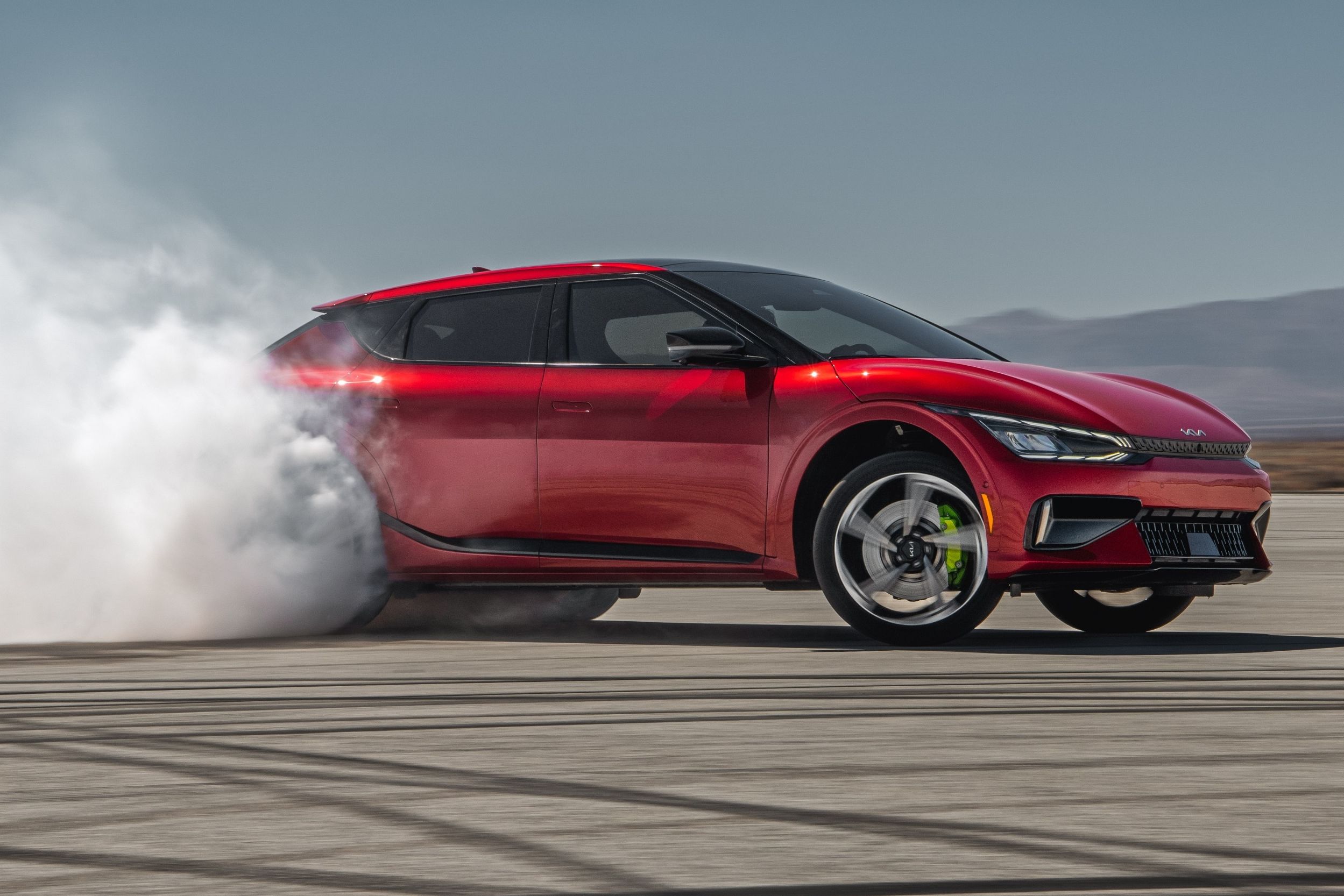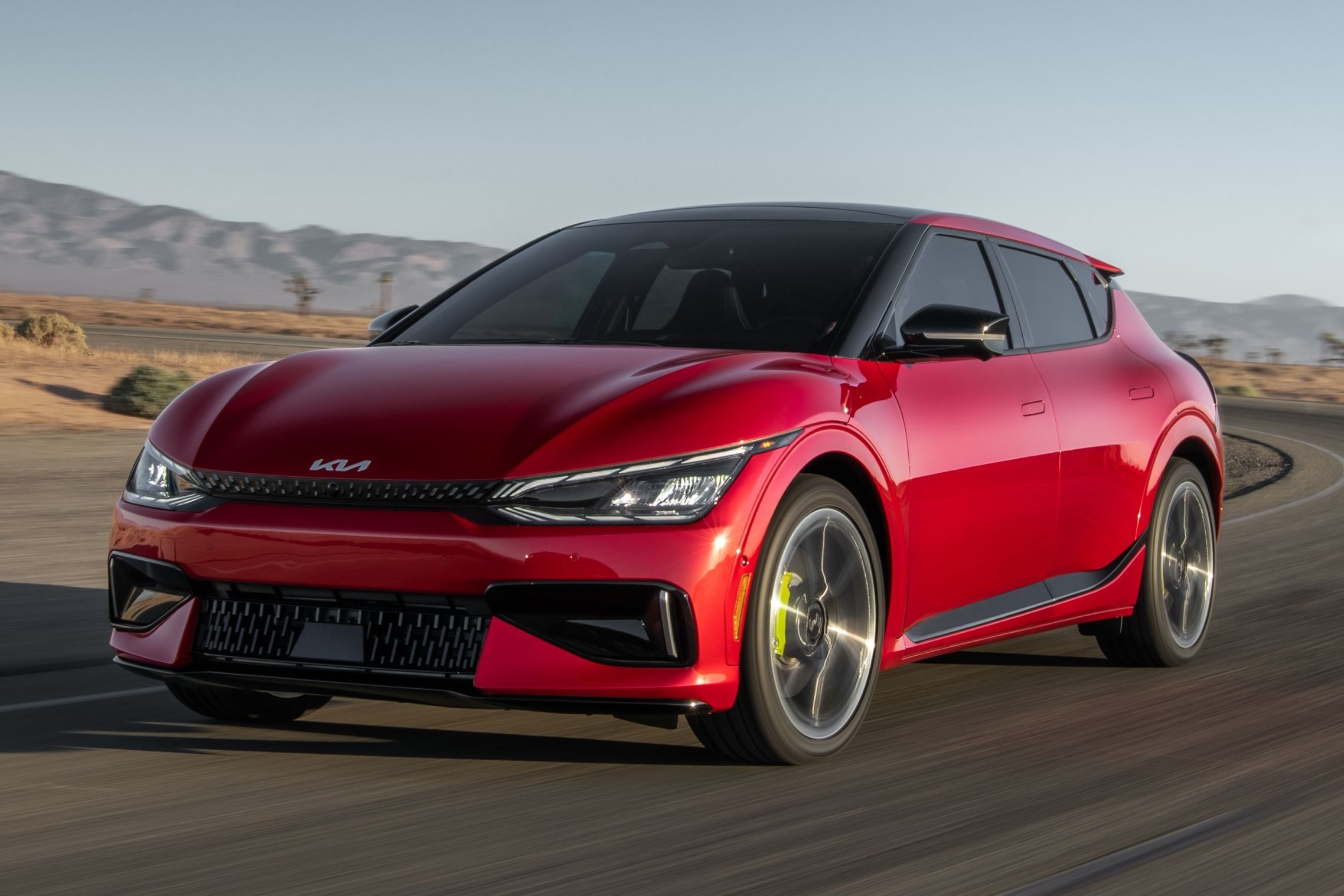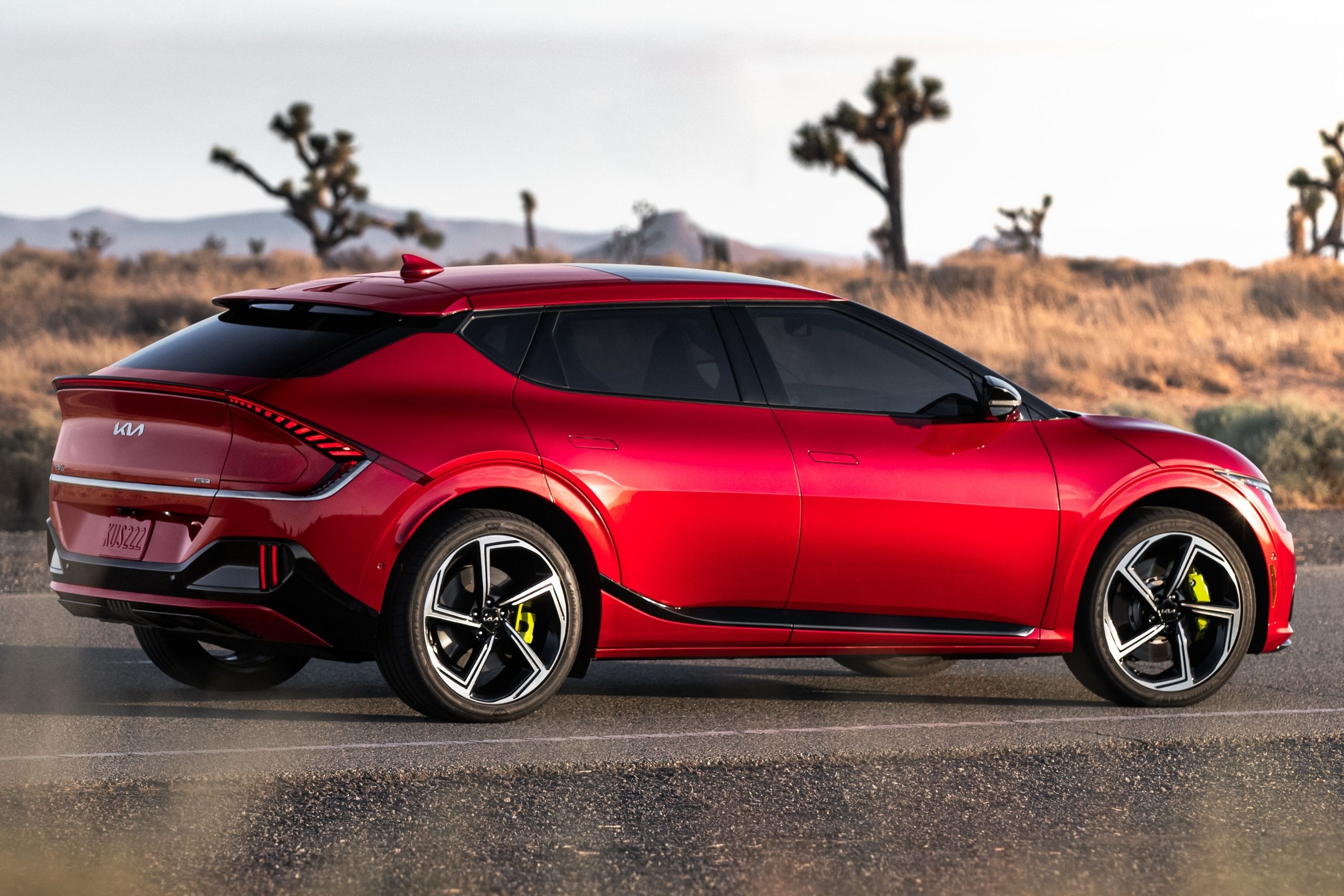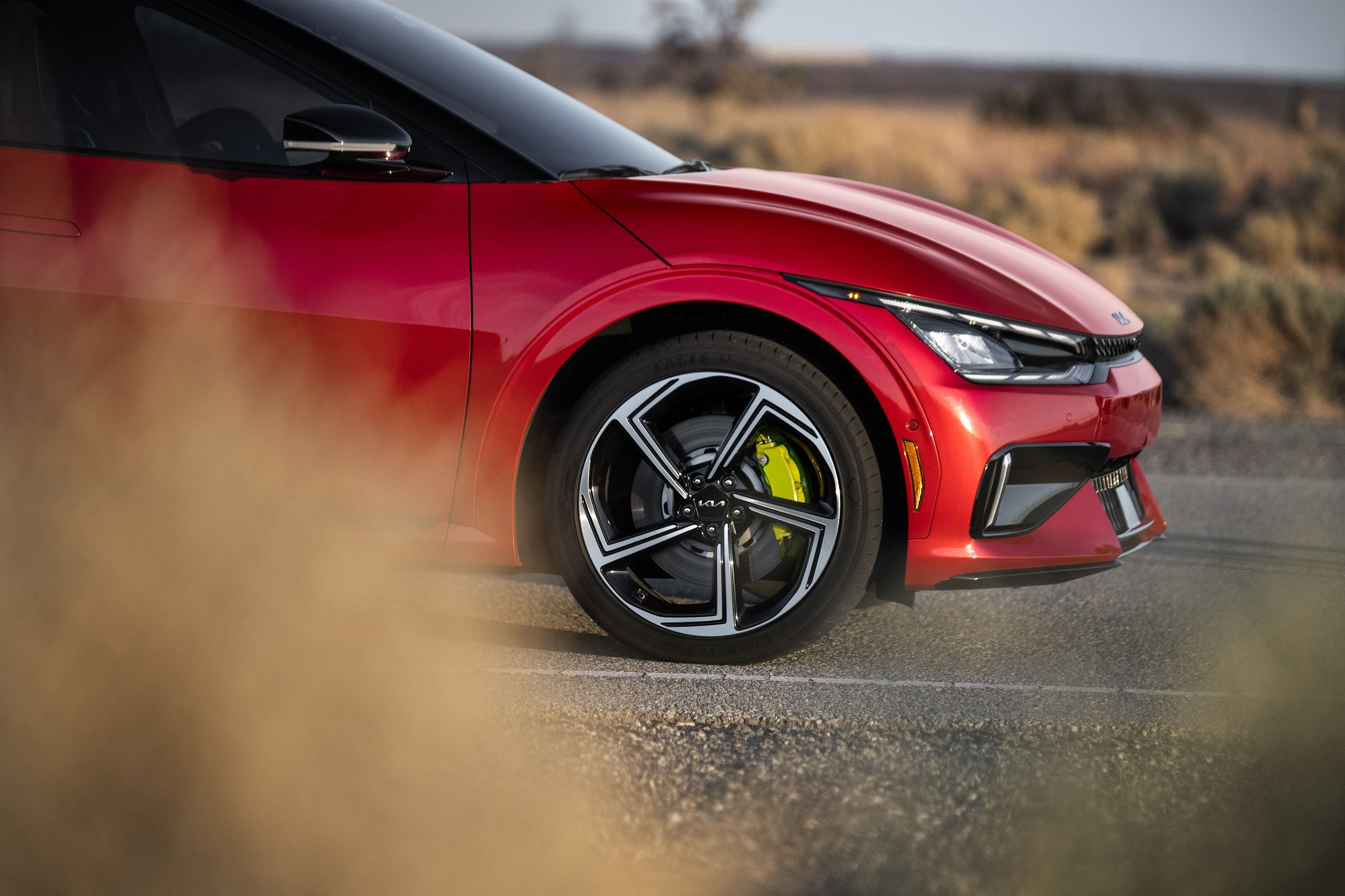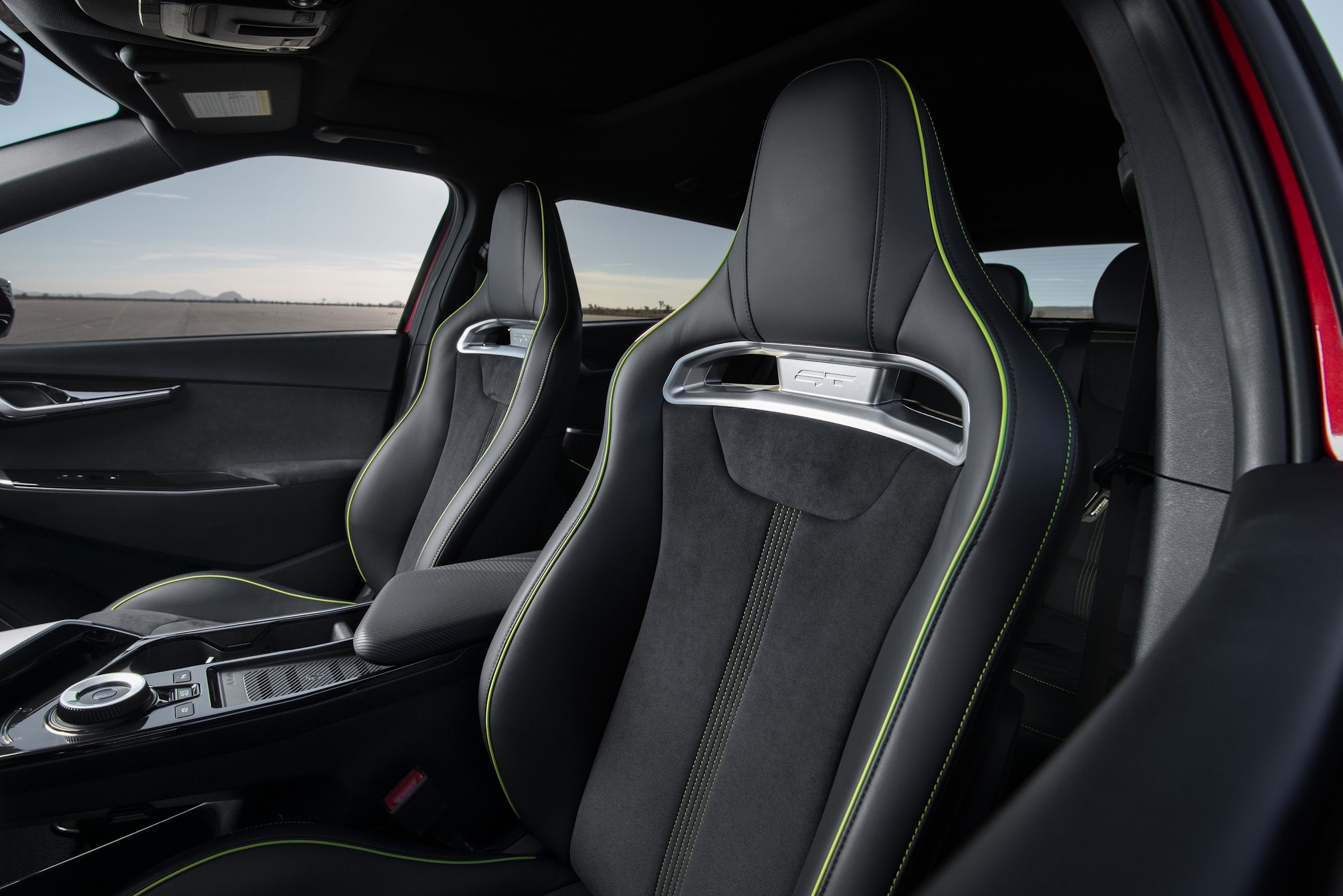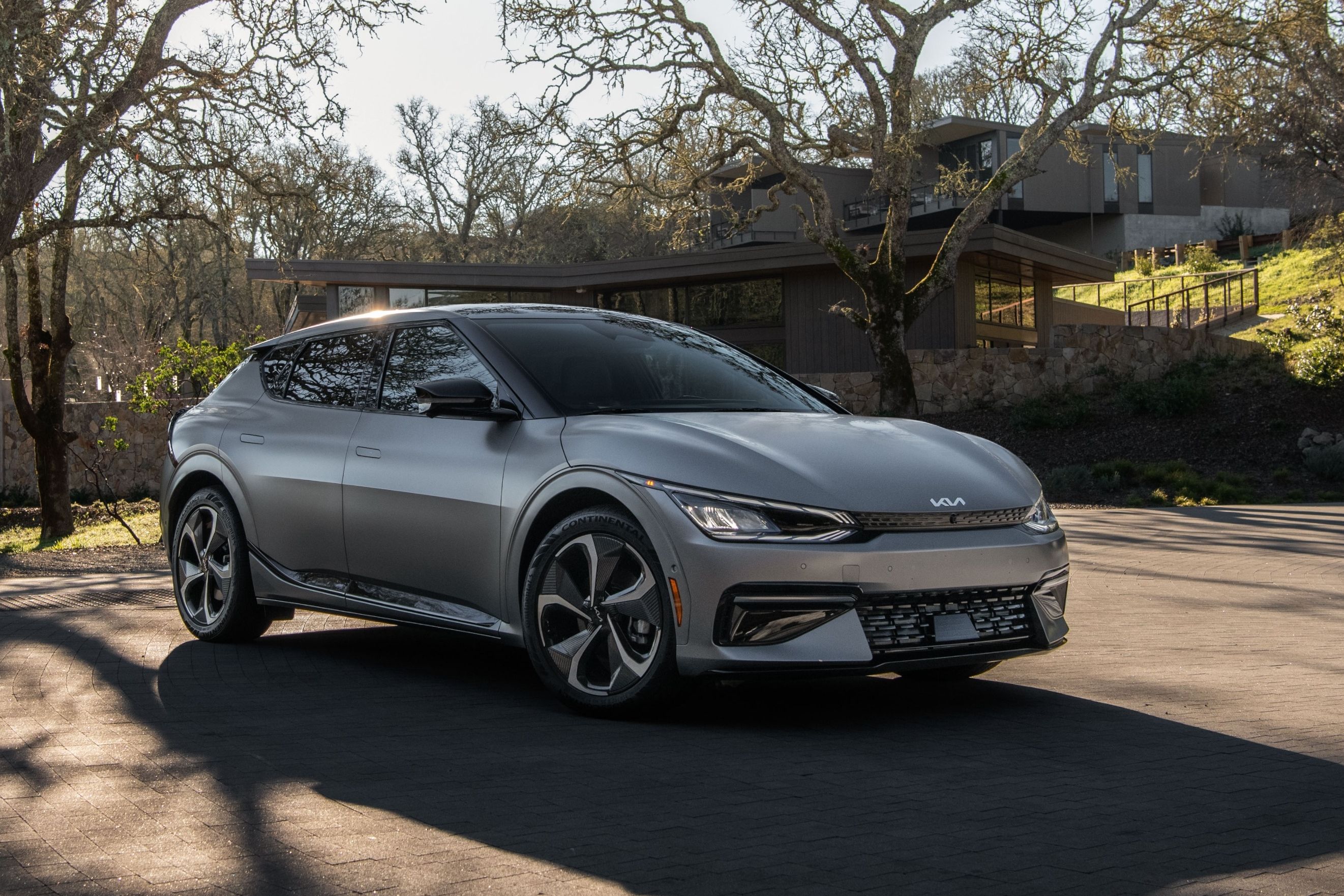
- EV6 GT's dual-motor setup produces 576 horsepower and 546 lb-ft of torque
- 0-60 mph in 3.4 seconds and tops out at 161 mph
- Drift Mode is standard
- 10-80% recharge in under 18 minutes
Kia unveiled the all-new EV6 GT today, and let's not beat around the bush: it's faster than both a Ferrari Roma and Lamborghini Huracan Evo. At least in a straight line, that is, as Kia claims the latest version of its EV6 won a drag race with the two cars mentioned above in an AMCI-certified drag race.
We're not surprised, given the power output and claimed performance figures. It comes with two motors with a combined power output of 576 hp. Thanks to all-wheel traction, the EV6 GT reaches 60 mph from a standstill in 3.4 seconds and tops out at 161 mph.
In short, it's the most powerful production Kia ever, easily beating the excellent but unloved Stinger GT.
The core of this performance is a 77.4 kWh battery pack that powers a 160 kW front motor and a 270 kW rear motor. Combined, the motors produce 576 horsepower and 546 lb-ft of torque. These figures are more impressive than the car it will inevitably compete with. The Tesla Model Y is the American EV maker's biggest success story, but in its Performance guise, it only has a paltry 384 electric horses. The EV6 GT also laughs in the face of the 480-hp Mustang Mach-E GT.
But it all starts falling apart slightly when it comes to range. Kia claims a range of just 206 miles, which falls way short of Tesla's 303-mile range. Range has never been the Mach-E's strongest selling point, but even the top-spec GT manages to go 260 miles between charges.
Thankfully, the EV6 GT can refill its battery faster than most. According to Kia, the GT can recharge from 10-80% state of charge (SOC) in less than 18 minutes at a 350-kW charging point. It has a multi-charging system that supports both 400- and 800-volt DC charging, the latter being an industry first, which is compatible with chargers with speeds ranging from 50 kW to 350 kW.
Kia also had the foresight to make the GT a power source on wheels. It can provide up to 1,900 watts to whatever electrical appliance you can think of via its Vehicle-to-Load (V2L) function.
While the EV6 GT's straight-line performance is impressive, it's nothing we haven't seen before. The Tesla Model Y and Mach-E GT take a split-second longer to get to 60 mph, which is completely and utterly imperceptible to the human behind the wheel.
Most EVs are one-trick ponies, but Kia seems to have gone out of its way to ensure the GT provides a good time when it's not going in a straight line. To this end, the GT actually encourages you to go sideways thanks to a Drift Mode. Other new driving modes include GT Drive Mode and My Drive Mode. Interestingly, Ford is also working on a smokey slide mode for its next-generation vehicles.
The GT comes standard with a sport suspension with electronically controlled dampers, larger ventilated disc brakes, Z-rated Goodyear Eagle F1 rubber, and an electronic limited-slip differential.
The driving modes do what they say on the box. GT Drive Mode optimizes the setup for a fun driving experience, while My Drive Mode allows you to customize the experience. In Drift Mode, the power is sent solely to the rear. As you can imagine, it's pretty easy to light up the rear tires with 546 lb-ft available from 1 rpm.
The exterior enhancements over the standard EV6 are pretty subtle. The GT has bespoke 21-inch alloy wheels, neon brake calipers, a rear spoiler and diffuser, and model-specific front and rear fascias designed to emphasize the car's width.
The most eye-catching interior features are the vegan suede trimmed bucket seats with GT embroidery and green piping. There are also neon accents, a striped motif on the upper dashboard and front center armrest, and ambient lighting to enhance the sporty atmosphere.
The EV6 GT goes on sale in the fourth quarter of 2022, and pricing will be announced closer to the vehicle launch. When it arrives, 1,000 kWh of charging credit at Electrify America stations will be included for a three-year period.

